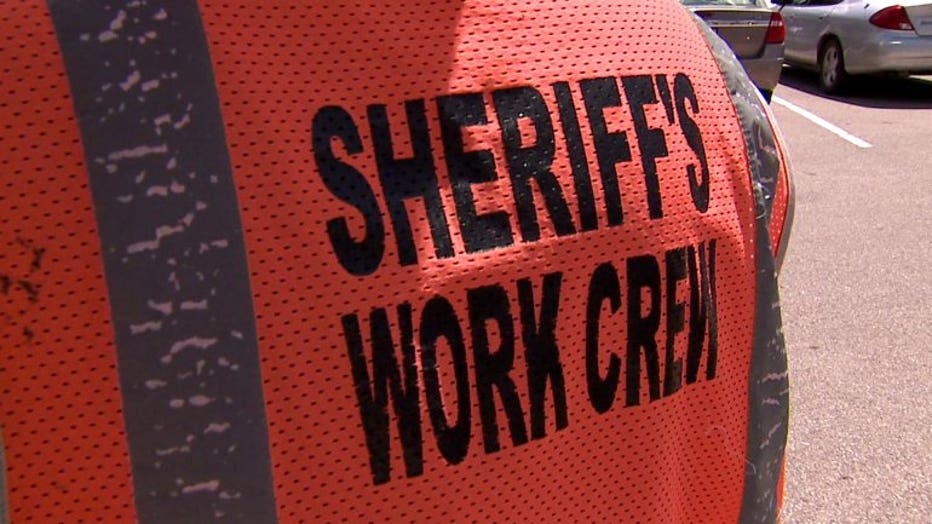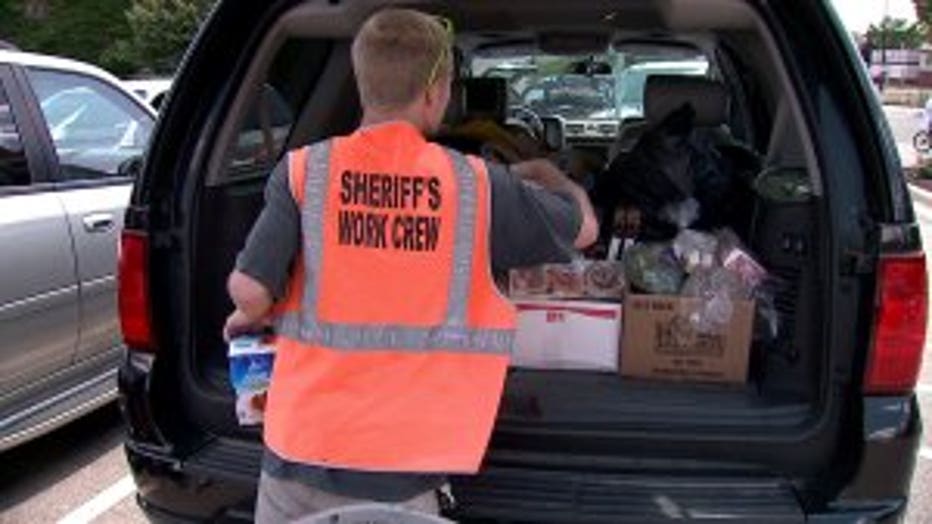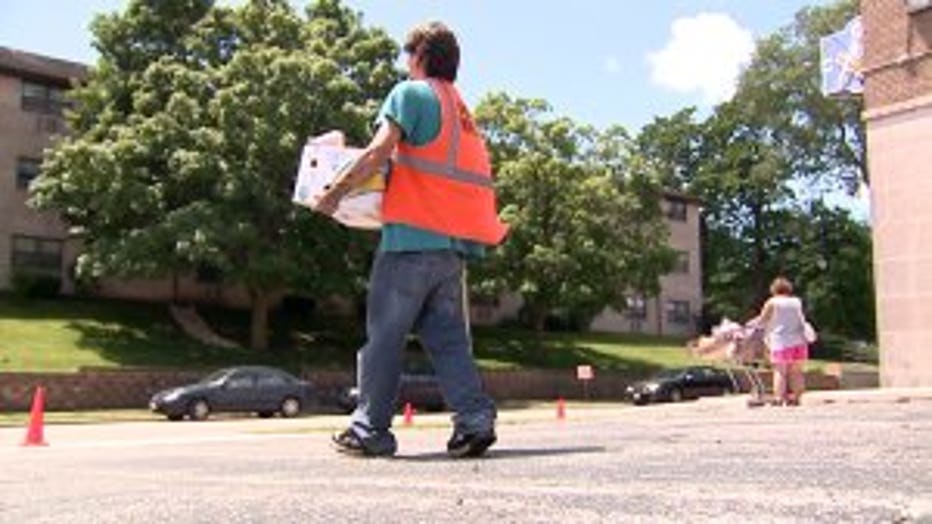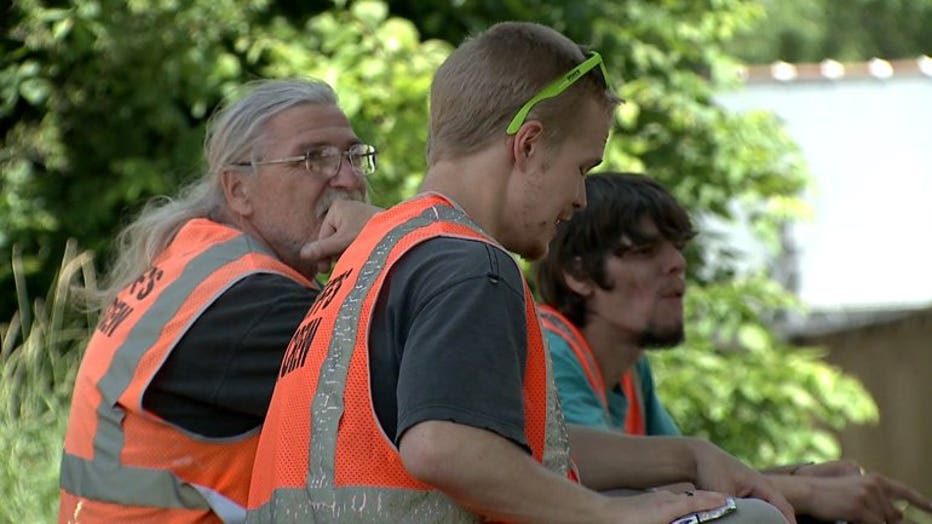"Jails are for people that are dangerous:" Workenders allows other offenders options
BELOIT -- On a warm summer weekday, a long line winds out the door at the Masonic temple. The Second Harvest food pantry has set up shop and a handful of helpers in orange vests push carts and load boxes into cars. The "SHERIFF'S WORK CREW" labels make clear those men and women did not choose to be there.

Sheriff Robert Spoden
10 years ago, Rock County had a problem. The recession put an even greater strain on the sheriff's department's budget. Sheriff Robert Spoden says the county jail was so overcrowded, he was paying surrounding counties to house his excess inmates.
"We were shipping out over 100 people a day to different facilities and we were spending an average of $55 per day per inmate to ship out," Spoden said.
While in Colorado, Spoden said he learned of a program in Larimer County; it allowed inmates who were being jailed over unpaid fines and fees to work off their debts. Spoden said he thought of the inmates in his jail who would never have the money to pay their fines.

"If you received a fine of $5,000 or $2,000 or even $1,000, it may as well be $1 million because they would not have the ability to pay that and yet support themselves and their families," Spoden said.

With the support of other elected officials and the district attorney's office, Rock County launched the "Workenders" program in 2008. Spoden says the math is simple: rather than pay $70 a day to house an inmate, the county now takes $52 off an offender's debt for every eight hours worked at a nonprofit.
"Jails are for people that are dangerous and people that scare us; they're not for people that are irresponsible or lack good judgment," Spoden said.

Both David Hanevole and Xaviera Brooks fall into the latter category, according to Rock County. They're both wearing the orange vests, loading up carts at the food pantry. Both young men have theft convictions on their record. They also each had warrants issued for their arrests when they failed to pay off fines.

"We're not hardened criminals or anything," Hanevold said.
Having taken from others in the past, the men are giving on this day. Because they're non-violent offenders who would be jailed over the unpaid fines, they're eligible for Workenders. The program allows offenders to live at home while reporting for service twice a week.
"It's a good program to go in, especially if you ain't no jail person like me 'cause I ain't going to no jail," Brooks said.

The men work alongside Thomas Parr whose long gray hair and beard are a sharp contrast from the considerably younger other Workenders at the food pantry. Parr's warrant was nearly 30 years in the making.

"I went to the VA and they informed me I had a warrant for my arrest, which I was unaware of," Parr said.
After moving back from Arizona, Parr learned he never paid the fine from a 1989 disorderly conduct arrest. Through the initial screening program Rock County's incoming offenders, Parr learned he qualified for Workenders and happily accepted a placement.
"I think it's great because some people can`t afford it," Parr said, "I`m a disabled vet and I can't afford it.)
While those partaking in the program find it preferable to being housed in jail, Spoden bristled at the notion of Workenders being soft on crime.

"In my mind, it's more accountability to have them go out, do something for the community, earn their way back into the community," Spoden said, "And give something instead of taking something."
Just outside the jail is another food-related project of the Workenders'. Over the summer, offenders have tended to the Rock County farm. In August, Spoden said they will serve a charity dinner featuring the produce they've grown.
Similar programs pop up elsewhere
Surrounding counties have implemented their own inmate work programs in recent years. The difference is these programs allow inmates to work off their sentences while Workenders keeps non-violent offenders out of jail to begin with - essentially a community service sentence. Here's the information we've received about programs in other Southeast Wisconsin counties:
MILWAUKEE COUNTY: Melissa Baldauff, a spokeswoman for County Executive Chris Abele, said a program for inmate work crews has been in place since 2013. Non-violent Huber release inmates work in the parks, the zoo, and on highway clean-up crews. Inmates earn one day off their sentence for eight hours of work. Inmates working inside the House of Correction shave a day off their sentence for every 24 hours of work.
RACINE COUNTY: Sheriff Christopher Schmaling said his department launched the "Sheriff's Community Serivce" program in 2011. He said inmates shovel snow at the courthouse, cut grass, and paint at different county facilities.
WAUKESHA COUNTY: Administrative Deputy Jennifer Wallschlaeger said Huber inmates go to various worksites and are given one day of credit for every eight hours worked.
OZAUKEE COUNTY: Captain Jeffrey Sauer said inmates are allowed to work within the confines of the jail, maintaining the grounds or working on laundry or in the kitchen. Eligible inmates have one hour taken off their sentences for every one hour worked.
KENOSHA COUNTY: Sheriff David Beth said there are programs at the jail for inmates but nothing that allows offenders to stay at home while working off a sentence. Beth said he plans on looking into the Workender program.

